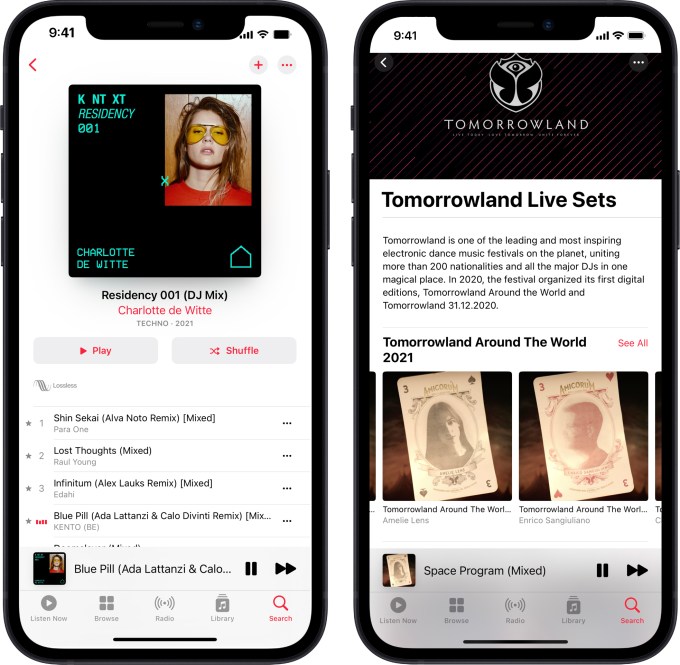News: Why do the media always pit labor against capital?
There are abusive corporations, and we do need a better social safety net so that people aren’t at the mercy of the doctrine of shareholder primacy, but that truth disguises a more complicated reality.
Contributor
Contributor
The uproar that arose after Dolly Parton rewrote the lyrics to “9 to 5” for a Squarespace Super Bowl commercial revealed a problem with the English language: A worker is no longer a worker.
As she sang in celebration of entrepreneurs:
“Working 5 to 9
you’ve got passion and a vision
‘Cause it’s hustlin’ time
a whole new way to makе a livin’
Gonna change your life
do something that givеs it meaning…”
Some criticized it, saying it celebrated an “empty promise” of capitalism, as if people aiming to establish their own businesses were “workers” who needed to be protected from powerful corporations. Others grasped that there is more nuance in our economy than ever before and that, perhaps, Parton was on to something.
In fact, her updated lyrics represent a shift in the primacy between capital and labor in the 40 years since she penned the original. Gone is the idea that getting ahead is only a “rich man’s game… puttin’ money in his wallet.” Workers today have a different potential than they did in 1980 when she first sang:
“There’s a better life
And you think about it, don’t you?
It’s a rich man’s game
No matter what they call it,
And you spend your life
Puttin’ money in his wallet.”
There are abusive corporations, and we do need a better social safety net so that people aren’t at the mercy of the doctrine of shareholder primacy, but that truth disguises a more complicated reality. The divide between capital and labor increasingly looks like an anachronism, a throwback to the language and illusory simplicity of another time. Yet still, the media persists in pushing this false dichotomy; this mistaken idea that labor and capital are two separate and oppositional forces in our economy. Perhaps doing so is human nature.
Or perhaps it simply sells more newspapers or generates more clicks. The media certainly thrives on conflict (real or imaginary) and, along with human nature to try to group things into black and white, the continued framing of our economy as somehow consisting of individual actors who exist solely on one side of the capital/labor line makes for easier narratives.
The truth of this aspect of our economy, as with most things, exists in the gray areas. In the nuance and the movement between groups. The U.S. economy has always been uniquely entrepreneurial, from the discovery of the “new land” to the formation of our government to the expansion of our country and eventually its industrialization. Entrepreneurs have long led the way. Today, nearly 60 million people are entrepreneurial in some way.
The vast majority inhabit the frontlines of the economy. They are freelancers or the late-night business starters that Parton sang about. They are freelancing on the side to earn money to support some other dream, or are stitching together lives for themselves by being their own boss. They’re driving Ubers, delivering meals for GrubHub and selling their crafts on Etsy. Never have more people had more access to expand their horizons through pursuing their entrepreneurial dreams than right now. And they exist in the world of technology, where a single person at a kitchen table has the same power to bring an innovation to market as giant corporations did four decades ago.
Victor Hwang, CEO of Right to Start and a former vice president of entrepreneurship for the Kauffman Foundation, described the capital-versus-labor debate as “the biggest false narrative out there. It’s an artificial narrative that we’ve created: employer versus employee; big versus small; corporation versus worker. All are false narratives and contribute to the incorrect notion that the most important fight in our economy exists between these supposedly oppositional forces.”
But our economic and government funding debates are framed, often by the media, around the idea of capitalism versus socialism, corporations versus workers. That increasingly divisive conversation has some of the hallmarks of a deliberately engineered division, like the ones over climate change or gun rights. Right-wing groups with an interest in freezing the government into inaction figured out how to divide the country into two groups and get them fighting.
Why don’t we have universal health care, parental leave, working infrastructure — all things that would, not incidentally, boost entrepreneurship and small business? We’ve been too busy fighting about a socialist takeover and the evils of capitalism.
The conflict thrives in part because we don’t have the right language to describe what’s happening now: “These debates should be viewed as part of a larger discussion,” Hwang said. “We should be striving to encourage highly innovative people and companies. What are the categories we need to develop? How do you classify someone’s role in the economy?”
What we need as an economy is a system that empowers more people to be producers and entrepreneurs. To solve problems and look for opportunities to create change in their communities. Instead, we’ve built a system that supports incumbents; that thrives on the status quo; that stifles innovation and uses the tactics of division to do so. It’s a tension that stems from our neoliberal worldview that achieved an almost consensus in the late 20th and early 21st centuries.
Beyond just arguing that free markets and open trade make it easier and better to do business (which we generally agree with), it also implied that the only thing that mattered in our economy was making big companies bigger (while, perhaps, allowing for the occasional upstart — but only those that had the potential to grow quickly and become big companies themselves). Lost was the value of smaller businesses, operating in the in-between spaces in our economy. We don’t even effectively measure their impact.
Wanting to know how the “economy” is doing, we look no further than the fate of the 500 largest publicly traded companies (the S&P 500) or the 30 massive businesses that comprise the Dow Jones Industrial Average. No wonder people across Main Streets are scratching their heads as pundits describe the economy as thriving by citing the continued rise of the Dow when they can see the millions of small businesses closing all around them.
In our book, “The New Builders“, we describe entrepreneurs as “builders.” Builder is a word with Old English roots in the ideas “to be, exist, grow,” according to the Online Dictionary of Etymology. In a century where change is the lingua franca, builders own the value of their own labor as a mechanism to build independence and, eventually, capital.
We often forget that the majority of these builders — the small business owners of America — create opportunities with the most limited resources. According to the Kauffman Foundation, 83% of businesses are formed without the help of either bank financing or venture capital. Yet small businesses are responsible for nearly 40% of U.S. GDP and nearly half of employment. Perhaps that’s why International Economy publisher David Smick termed them “the great equalizer” in his book of the same name.
Technology has fundamentally changed the landscape for businesses of all sizes and has the potential to enable a resurgence of our small business economy. Rather than pushing a false narrative that individuals need to choose between being a part of the labor or capital economies, we should be encouraging fluidity between the two. The more capital ownership we encourage — through savings, investment in their own businesses, and by allowing more and more people to become investors of all kinds — the more we drive wealth creation and open economic activity for generations to come.
A version of this article originally appeared in the Summer 2021 edition of The International Economy Magazine.







